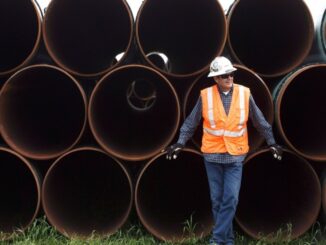
Guest Post by Willis Eschenbach
Apparently I must be a glutton for punishment, because here I am in the arena once again, discussing the results of my research and preparing for the insults and brickbats.
However, there’s no place I’d rather be—I’m a Teddy Roosevelt man. He famously said:
“It is not the critic who counts; not the man who points out how the strong man stumbles, or where the doer of deeds could have done them better.
The credit belongs to the man who is actually in the arena, whose face is marred by dust and sweat and blood; who strives valiantly; who errs, who comes short again and again, because there is no effort without error and shortcoming; but who does actually strive to do the deeds; who knows great enthusiasms, the great devotions; who spends himself in a worthy cause; who at the best knows in the end the triumph of high achievement, and who at the worst, if he fails, at least fails while daring greatly, so that his place shall never be with those cold and timid souls who neither know victory nor defeat.”
But I digress …
The earth’s climate is an energy flow system that on average is approximately at steady-state. At steady-state, the amount of energy absorbed by each part of the system is equal to the amount of energy lost by that part of the system. If this were not true, the affected parts would be continually either warming or cooling.
And this is true of the earth’s surface. It basically loses as much energy as it gains, and as a result, the earth’s surface temperature over the 20th century was stable to within less than one percent.
Let me start this perambulation with the fact that not all of the energy flux absorbed by the surface is converted to surface temperature and lost to thermal radiation. Some of the energy flux is lost as “sensible” heat, heat we can feel, through conduction to the atmosphere and convection away from the surface. And some is lost from the surface as “latent heat”, meaning it is heat removed by evaporation at the surface. After those losses, the energy that remains heats the surface and is lost as longwave upwelling radiation from the surface.
Figure 1 shows the relative amounts of energy absorbed and lost by the surface.
Figure 1. Energy budget of the surface, showing energy gained (longwave and shortwave) and energy lost (as longwave radiation and as latent/sensible heat.) Since the planet is at a steady state, gains and losses are ~ equal.
Now, suppose that we want to raise the surface temperature of the earth by 1°C. How much additional energy flux will be necessary to create that new warmer steady-state?
Well, since at steady-state we need gains to equal losses, we need as much flux as the additional amount of energy flux that will be radiated at the new higher temperature. Using what is known as the “Stefan-Boltzmann Equation”, we can calculate that we need a minimum of an additional 5.5 watts per square meter (W/m2) of energy flux to raise a blackbody at the earth’s temperature by one degree Celsius. (It’s a minimum because the percentage of latent/sensible heat loss increases slightly with increasing temperature, but we can ignore that in this analysis.)
However, we also need to note that from Figure 1, only about 78% of the absorbed energy flux is converted to temperature and lost as radiation. So including latent/sensible heat losses we’ll need 5.5 / .78 ≈ 7 W/m2 of additional total energy flux absorbed by the surface to raise the surface temperature one degree.
Now, consider the mainstream IPCC position, that a doubling of CO2 will increase downwelling longwave at the “top-of-atmosphere” (TOA) by 3.7°C. This means that if you instantaneously double the CO2, the amount of longwave escaping the planet at the top of the atmosphere will be reduced by 3.7 W/m2.
And this additional 3.7 W/m2 of downwelling radiation from the CO2 doubling is claimed by the IPCC to increase the surface temperature by 3°C.
Bottom line? According to the IPCC, it only takes ~ 1.2 W/m2 of additional TOA forcing to increase the surface temperature by 1°C.
So here is the serious question I alluded to in the title …
How does a top-of-atmosphere CO2 forcing of 1.2 W/m2 mysteriously turn into the 7 W/m2 of additional surface energy flux that we need to warm the earth by 1°C?
The IPCC folks wave their hands and vaguely allude to “cloud feedback” and “water vapor feedback” increasing the downwelling IR from the top-of-atmosphere to downwelling IR at the surface.
But this would require that the feedback amplify the original signal by a factor of almost six … and my understanding is that a feedback factor greater than one leads to runaway.
So my question remains:
What mysterious force is changing the 1.2 W/m2 of CO2 TOA forcing, the forcing that the IPCC says will raise the surface temperature by 1°C, into the 7 W/m2 of surface absorbed energy flux that is actually necessary to raise the global temperature by 1°C?
All serious answers welcome.
My best to all,
w.
Footnote: The idea that cloud feedback is positive is quite unlikely. First, Le Chatelier’s Principle says that if a dynamic equilibrium (a steady-state condition like the climate) is disturbed by changing the conditions, the position of equilibrium shifts to counteract the change to reestablish an equilibrium.
Next, the claim of a net positive cloud feedback is contradicted by the CERES data. Here’s net cloud radiative effect (CRE) versus temperature on a gridcell by gridcell basis.
Figure 2. Net cloud radiative effect (CRE). This is the change in downwelling radiation in W/m2 when clouds are present. It includes both the longwave and shortwave effects. Below the horizontal line the net effect is cooling.
The slope of the yellow line indicates the direction of the cloud feedback. If it cools more with increasing temperature (negative feeback), the slope goes down to the right. And if the feedback is positive, if it cools less with increasing temperature, the slope goes up to the right.
In the tropics, about 40% of the planet, the feedback is extremely negative, the slope goes almost vertical. And from -15°C to 15°C, another 33% of the planet, the feedback is also negative.
So it doesn’t seem the answer to my question is “cloud feedback”.
Of Note: As with my previous two posts, I am examining the ramifications and the mathematics of the greenhouse effect. If you think the greenhouse effect violates physical laws, read my two posts, People Living In Glass Planets, and The Steel Greenhouse. And if after reading them, you still think the GH effect doesn’t exist, or that downwelling radiation doesn’t exist, or that radiative energy fluxes don’t add, then please, go away. Don’t go away mad, in fact you are welcome to continue to read the comments … but this is NOT the thread to dispute downwelling radiation or the greenhouse effect. Those subjects tend to totally threadjack the thread to an inane endless discussion that settles nothing, and I’m not interested in that. Please take those and related subjects to some other thread.
I’m interested in a serious answer to my question about how it’s supposed to work, how 1.2 W/m2 at the TOA is converted into 7 W/m2 at the surface, and where that extra energy is allegedly coming from.
MATH: The change in radiation from a 1°C temperature change of some object is given by the differential of the Stefan-Boltzmann equation:
dWdTC = function(c,epsilon=1) 2.27 * 10-7 * epsilon * (c + 273.15)3
where c is the temperature in degrees and epsilon is emissivity. In a steady-state condition where average losses are equal to average gains, this is also the amount of additional energy needed to raise the object’s temperature by 1°C. As is customary in this kind of analysis, and because the emissivity of the earth is somewhere above 0.95, for simplicity I’m using epsilon = 1.
My Usual: Please quote the exact words you are discussing in a comment so we can all follow your train of thought.



